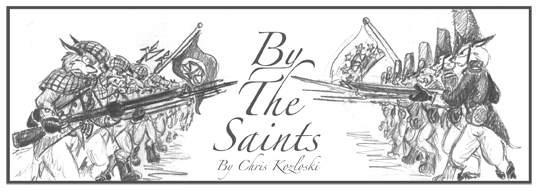Moving is going along... Slowly. I managed to get one frame done this week. =P Hopefully I can get a couple more done tonight.
As I promised, I have some filler pictures until I can get time for new stuff. The context of this old picture is the area of the Ayrelands known as The Barrens. The Barrens is a 1000 foot high limestone massif with deep fissured bedrock exposed at the surface. It is characterized by limestone pavement, with thin grass in the low spots, sinkholes and fissures, and extensive networks of underground streams and caves. Think of a series of 1/4 mile to mile square plateaus separated by 10-15 ft wide fissure canyons in a grid pattern, interspersed by uvalas, natural bridges and the occasional narrow stream valley.
One of the characters, who will be introduced shortly, is from Uvala Kerr in the Barrens. An uvala is a cave that has collapsed forming a long narrow valley, such as is seen in this picture. The Barrens, as can be seen, is almost bereft of topsoil so most of the population is centered around these features or in similar deep fissures with some soil at the base for crops.
Agriculture is a challenge in the Barrens. Soil is so thin that standard crops will not grow outside of the uvalas without extensive modifications of the land. A black market exists where "Dirt grubbers" sneak out to the more fertile portions of the Ayrelands and haul in stolen topsoil to enrich the soil of the Uvalas and the surrounding plateaus that are hewn into shallow bowl-like fields to grow crops. Most of the regions agriculture however is in mushroom farms that grow in the caverns.
Despite the terrible farming conditions, the Barrens is very prosperous in two aspects. The native chamois of the region are hardy and plentiful, supplying meat and fleeces to the hunters of the region. Sheep are raised extensively in the Barrens, the only stock able to survive on the thin grasses and lichens, and the wool trade is the regions sole export. Unfortunately, the export of wool and chamois hide is bottlenecked by the terrain and controlled by a few clan chiefs. Most of the profits are filtered through them and the textile companies that buy the wool leaving the majority of the clansmen poor and dependent on their chiefs for their livelihood.
The Barrens appears to outsiders to be a nearly lawless society. The inhabitants follow the dictums of the Saints but are strongly independent and the clan chiefs run their portions of the Barrens however they see fit. Smuggling is common and the richer countryside outside of the Barrens is known for its constabalatory that tries to keep the thieves and highwaymen form the poor region at bay. Consequently, the Barren men are thought of as lawless anarchists by outsiders.
In truth, Barren men are fanatically loyal to their family and clans. They also hold loose regional loyalty to the Barrens, keeping quiet to outsiders of the inner politics and workings of the region so there is a veil of mystery around the Barrens to the rest of the Ayrelands. Historically, internal warfare was common as the clans competed for the limited resources. But recent stabilization of clan borders and strong leaders has kept conflict to a minimum.
Unfortunately "The Passing" has hit the Barrens heavily. The Chembrian organized anti-hunting laws and profit gouging of the wool trade has hit the region heavily. Debt has taken a terrible toll on the workforce as they are sold off by the "Debt Brokers" to the industrial areas of Chembria. Tough and scrappy to begin with, the Barrens men are at the end of their rope. With the threatening of their way of life thousands flocked to the Ayre cause.

